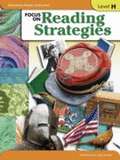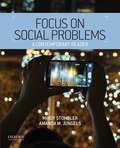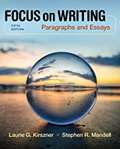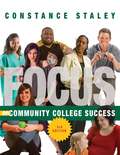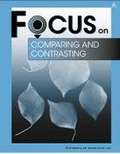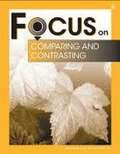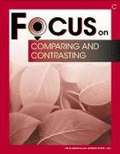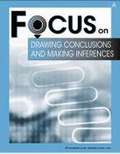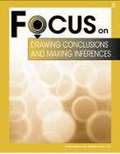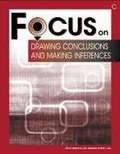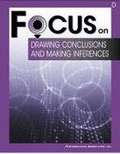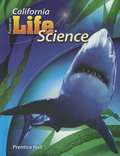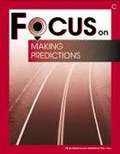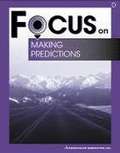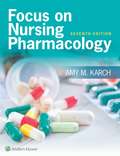- Table View
- List View
Focus On Physical Science (California)
by Douglas Fisher Dinah Zike Laurel Dingrando Margaret K. Zorn National Geographic Cindy Klevickis David G. Haase Isaac Turiel Jennifer GonyaNIMAC-sourced textbook
Focus On Reading Strategies Level H
by PLC Editors StaffFocus On Reading Strategies, Grade 8: A language arts textbook
Focus On Social Problems: A Contemporary Reader
by Mindy Stombler Amanda M. JungelsFocus on Social Problems: A Contemporary Reader exposes students to current issues in the field. The selections in this reader help students understand how social problems are defined and constructed, increase their empirical knowledge about the causes and consequences of social problems, and develop empathy. Working from a critical social constructionist foundation, the readings address a wide variety of social problems. Editors Mindy Stombler and Amanda M. Jungels include a combination of research-based articles and popular media pieces. Each chapter opens with an interview of a social-change activist doing work related to the chapter's featured social problem, giving students an opportunity to envision themselves as agents of social change.
Focus On Writing: Paragraphs and Essays
by Laurie G. Kirszner Stephen R. MandellFocus on Writing: Paragraphs and Essays, new from best-selling authors Laurie Kirszner and Stephen Mandell, is their most accessible writing text yet. Focus on Writing engages students visually, demonstrates concepts with color and highlighting, and offers students more grammar support than any comparable text on the market. This text provides the same excellent coverage that Kirszner and Mandell’s popular workbook series, Foundations First: Sentences and Paragraphs and Writing First: Practice in Context are known for, while also responding to students’ changing needs and realities. It offers more step-by-step coverage of the writing process and more diverse examples, exercises, and models, making it both student-friendly and thorough. Working clearly and simply to engage and motivate students, Focus on Writing empowers students to become capable writers and self-editors who are prepared for college composition.
Focus on California Earth Science
by PearsonTextbook for California schoolchildren on earth systems and processes, plate tectonics and earth's structure, weather and climate, and ecology and resources.
Focus on Community College Success (3rd Edition)
by Constance StaleyFOCUS ON COMMUNITY COLLEGE SUCCESS 3e speaks directly to the community college student, delivering strategies for navigating the unique challenges of juggling school, family, and work, and living/studying at home. Updated with the most current research, this forward-thinking text continues to strive to improve student retention, motivation, and engagement as well as offer proof of student progress and course efficacy through the Entrance and Exit Interviews. The THIRD EDITION includes expanded coverage of multitasking throughout the book with more strategies for helping students reduce distractions and focus on important tasks. A new section on Academic Professionalism defines what it means to be a professional student and shows students how they can build a positive reputation in the classroom. Staley, a leader in the field of motivation, helps students develop realistic expectations of what it takes to learn while encouraging and engaging them with direct applications and immediate results.
Focus on Comparing and Contrasting: Book A
by Curriculum AssociatesFill a comprehension skill gap with brief instruction and concentrated practice. Each skill book includes modeled instruction, guided and independent practice. Students answer selected- and constructed-response questions.
Focus on Comparing and Contrasting: Book B
by Curriculum AssociatesFill a comprehension skill gap with brief instruction and concentrated practice. Each skill book includes modeled instruction, guided and independent practice. Students answer selected- and constructed-response questions.
Focus on Comparing and Contrasting: Book C
by Curriculum AssociatesFill a comprehension skill gap with brief instruction and concentrated practice. Each skill book includes modeled instruction, guided and independent practice. Students answer selected- and constructed-response questions.
Focus on Comparing and Contrasting: Book D
by Curriculum AssociatesFill a comprehension skill gap with brief instruction and concentrated practice. Each skill book includes modeled instruction, guided and independent practice. Students answer selected- and constructed-response questions.
Focus on Drawing Conclusions and Making Inferences: Book A
by Curriculum AssociatesFill a comprehension skill gap with brief instruction and concentrated practice. Each skill book includes modeled instruction, guided and independent practice. Students answer selected- and constructed-response questions.
Focus on Drawing Conclusions and Making Inferences: Book B
by Curriculum AssociatesFill a comprehension skill gap with brief instruction and concentrated practice. Each skill book includes modeled instruction, guided and independent practice. Students answer selected- and constructed-response questions.
Focus on Drawing Conclusions and Making Inferences: Book C
by Curriculum AssociatesFill a comprehension skill gap with brief instruction and concentrated practice. Each skill book includes modeled instruction, guided and independent practice. Students answer selected- and constructed-response questions.
Focus on Drawing Conclusions and Making Inferences: Book D
by Curriculum AssociatesFill a comprehension skill gap with brief instruction and concentrated practice. Each skill book includes modeled instruction, guided and independent practice. Students answer selected- and constructed-response questions.
Focus on Earth Science
by Cpo ScienceContains comprehensive content that introduces your students to key earth science concepts including energy, plate tectonics, weathering, earthquakes, volcanoes, and ecosystems. The text also integrates important ideas in science such as heat, density and buoyancy.
Focus on Earth Science: Reading and Note Taking Guide Level B (California Edition)
by Pearson EducationThis Reading and Note Taking Guide helps your students succeed in their study of science. Working through the exercises will help them understand and organize the concepts presented in the textbook. The completed worksheets then become easy-to-follow study guides for test preparation. It also helps students improve their study and reading skills.
Focus on Elementary Astronomy Student Textbook
by Rebecca W. KellerThe Focus On Elementary Astronomy Student Textbook introduces young students to the scientific discipline of astronomy. Students will learn about the history of astronomy, the telescope, the Moon and the Sun and their effects on Earth, solar and lunar eclipses, planets and their characteristics, our solar system, neighboring stars, our Milky Way Galaxy, other galaxies, comets, asteroids, nebulae, other objects in space, and more.The Focus On Elementary Astronomy Student Textbook has ten full-color chapters. Grades K-4.
Focus on Health (Eleventh Edition)
by Dale B. Hahn Wayne A. Payne Ellen LucasFocus on Health offers an exciting and practical approach to the teaching of the traditional content areas of personal health. Its two key themes - the six dimensions of health and the five developmental tasks - help students apply the text's content to their own lives, by improving their decision-making skills. The strength of the Focus on Health narrative includes its appeal to both traditional and non-traditional students, particularly the special attention it pays to students over age 25 who have returned to college. In addition, among its many health assessment activities, Focus on Health includes one of the most comprehensive health assessments found in any personal health textbook - a great tool for establishing a health baseline for students. The companion Online Learning Center (website) offers a wealth of pedagogical and assessment features, including quizzes, Internet activities, downloadable MP3s, and more.
Focus on Life Science (California Edition)
by Pearson Prentice HallThis textbook is organized to support students learning of the California Science Content Standards, understanding this organization can help students master the standards provided in the book. Every chapter begins with a Focus on the Big Idea question that is linked to a California Science Standard. Focus on the Big Idea poses a question for students to think about as they study the chapters. They will discover the answers to the question as they read.
Focus on Life Science (California Edition, Grade #7)
by Donald FisherLearn more about the science of living things in this interesting textbook.
Focus on Making Predictions: Book C
by Curriculum AssociatesFill a comprehension skill gap with brief instruction and concentrated practice. Each skill book includes modeled instruction, guided and independent practice. Students answer selected- and constructed-response questions.
Focus on Making Predictions: Book D
by Curriculum AssociatesFill a comprehension skill gap with brief instruction and concentrated practice. Each skill book includes modeled instruction, guided and independent practice. Students answer selected- and constructed-response questions.
Focus on Nursing Pharmacology
by Rn Cns Amy M. KarchThis proven resource reviews and integrates students' baseline knowledge of physiology, pathophysiology, chemistry, and nursing fundamentals into chapters focused on "need to know" concepts about each group of drugs. Reflecting the most recent advances in the field, this concise and beautifully illustrated book organizes essential nursing pharmacology information into easy-to-learn steps.

